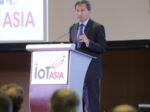Semiconductor use in India to grow to USD55 Billion in 2020
PENANG, Malaysia, Apr 8, 2016 – The Indian Electronic System Design and Manufacturing (ESDM) market is expected to grow from USD31.6 billion in 2015 to USD400 billion by 2020, and consumption of semiconductors is expected to increase to approximately USD55 billion in 2020. Given this backdrop, the electronics supply chain will convene at SEMICON Southeast Asia (SEA) from 26-28 April at the Subterranean Penang International Convention and Exhibition Centre (SPICE) in Penang, Malaysia. SEMICON SEA 2016 will offer a complete platform for engaging customers, suppliers, engineers and decision-makers from across the industry. With the objective to champion regional collaboration, the event will open new business opportunities for customers and foster stronger cross-regional engagement. Against this positive backdrop, many original equipment manufacturers (OEMs) and integrated device manufacturers (IDMs) have invested in the Indian semiconductor space. The Government of India expects investment proposals in electronics manufacturing to increase two times in the 2017-18 timeframe, giving a push to the government’s ‘Make in India’ initiative. According to Mr Ng Kai Fai, President of SEMI Southeast Asia, “The Indian semiconductor industry offers high-growth opportunities as the industries which source semiconductors are themselves witnessing high demand. With the Internet of Things (IoT) picking up momentum, the next generation of interconnected devices will further increase the demand for intelligent computing, creating sustainable demand for semiconductors.” “SEMI has organized a Technology Innovation Forum focusing on the impact and potential of IoT within the semiconductor sphere at the upcoming SEMICON Southeast Asia 2016. Known as the region’s premier showcase for the entire electronics supply chain, the event will feature industry leaders who will share their views on how IoT is impacting the semiconductor ecosystem. With a sold-out event, the support from global players provides a compelling reason why Vietnamese semiconductor stakeholders should visit SEMICON SEA 2016,” he added. […]


